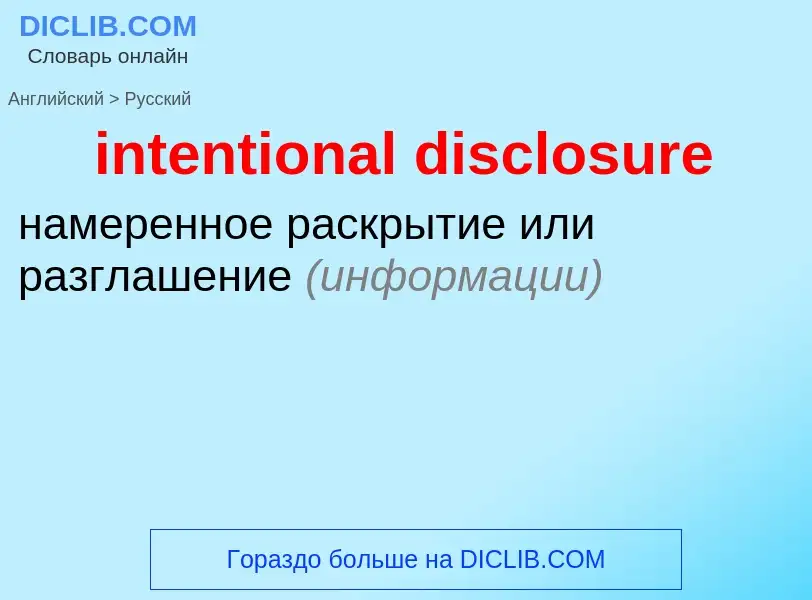Translation and analysis of words by ChatGPT artificial intelligence
On this page you can get a detailed analysis of a word or phrase, produced by the best artificial intelligence technology to date:
- how the word is used
- frequency of use
- it is used more often in oral or written speech
- word translation options
- usage examples (several phrases with translation)
- etymology
intentional disclosure - translation to russian
[dis'kləuʒə]
общая лексика
демаскирование
нефтегазовая промышленность
незамкнутая ловушка для нефти
существительное
общая лексика
обнаружение
разоблачение
то
что открыто
вскрыто
обнаружено
открытие, обнаружение, разоблачение, раскрытие
юриспруденция
раскрытие
выдача (сведений)
сообщение
разглашение
бухгалтерский учет
пояснительная информация (пояснения к финансовой отчетности в форме специальных разъяснительных помет (сносок) или прилагаемых пояснительных записок; содержат факты, мнения, детальные сведения и т. д., полезные для понимания отчета)
социология
описание (информация об опросе: как он был проведен, кто спонсировал и т. д.; имеет важное значение, т.к. влияет на интерпретацию результатов исследования)
Смотрите также
- accidental disclosure of information
- inadvertent disclosure
- information disclosure
- inproper disclosure
- intentional disclosure
- key disclosure
- premature disclosure
- unanthorized disclosure
Definition
Wikipedia
In computer programming, Intentional Programming is a programming paradigm developed by Charles Simonyi that encodes in software source code the precise intention which programmers (or users) have in mind when conceiving their work. By using the appropriate level of abstraction at which the programmer is thinking, creating and maintaining computer programs become easier. By separating the concerns for intentions and how they are being operated upon, the software becomes more modular and allows for more reusable software code.
Intentional Programming was developed by former Microsoft chief architect Charles Simonyi, who led a team in Microsoft Research, which developed the paradigm and built an integrated development environment (IDE) called IP (for Intentional Programming) that demonstrated the paradigm. Microsoft decided not to productize the Intentional Programming paradigm, as in the early 2000s Microsoft was rolling out C# and .NET to counter Java adoption. Charles Simonyi decided, with approval of Microsoft, to take his idea out from Microsoft and commercialize it himself. He founded the company Intentional Software to pursue this. Microsoft licensed the Intentional Programming patents Simonyi had acquired while at Microsoft, but no source code, to Intentional Software.
An overview of Intentional Programming as it was developed at Microsoft Research is given in Chapter 11 of the book Generative Programming: Methods, Tools, and Applications.

